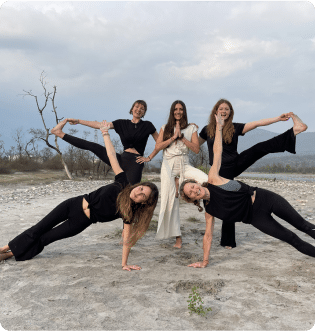Yoga, an ancient practice originating from India, has transcended borders and gained immense popularity around the world. As it traveled to the West, yoga underwent a transformation that blended with Western influences and lifestyles.
This fusion of cultures brought both positive and negative impacts, sparking a dialogue about the evolution of traditional yoga from its roots in India. In this blog post, we will explore the impact of Western yoga on traditional yoga, acknowledging the interplay of cultures and the ongoing evolution of this timeless practice.

Popularization and Global Reach:
The influence of Western yoga cannot be understated when it comes to the popularization and global reach of yoga. Through the efforts of dedicated practitioners and influential teachers, yoga has gained recognition, acceptance, and participation from people across diverse cultures and backgrounds. Western yoga has played a crucial role in spreading awareness about yoga’s physical, mental, and spiritual benefits, making it accessible to a broader audience worldwide.
Physical Emphasis and Fitness-Oriented Approach:
One notable impact of Western yoga on traditional yoga is the shift towards a more physically-focused and fitness-oriented approach. In the West, yoga classes often prioritize the physical aspects of asanas (postures) and emphasize the development of strength, flexibility, and body awareness. This emphasis on physicality has contributed to the popularity of dynamic yoga styles such as Vinyasa, Power Yoga, and Hot Yoga, catering to those seeking a challenging workout and improved physical well-being.
Commercialization and Consumer Culture:
As yoga gained popularity in the West, it also became a part of consumer culture. The commercialization of yoga resulted in the proliferation of yoga-related products, clothing lines, retreats, and celebrity endorsements. While this has made yoga more accessible to many, it has also raised concerns about the commodification and potential dilution of its deeper philosophical and spiritual aspects. It is important to strike a balance between commercialization and preserving the integrity of the practice.
Fusion of Western Yoga Styles and Techniques:
Western yoga has fostered an environment of innovation and experimentation, leading to the fusion of yoga styles and techniques. Integrating elements from various yogic traditions and blending them with Western exercise science and mindfulness practices has given rise to hybrid forms of yoga. For example, Yin Yoga combines Indian Hatha yoga with Taoist principles, and AcroYoga merges yoga with acrobatics and partner work. This cross-pollination of ideas has contributed to the diversification and expansion of yoga practices globally.
Cultural Appreciation and Authenticity:
With the popularity of Western yoga, there has been an increased appreciation for the cultural roots and origins of yoga in India. Many Western practitioners and teachers are actively seeking authentic experiences by traveling to India to study with traditional gurus and immerse themselves in the rich heritage of yoga. This cultural exchange fosters a deeper understanding and respect for the traditions and teachings of yoga, ensuring that its essence is preserved amidst its evolution.
The impact of Western yoga on traditional yoga from India is a complex and multifaceted phenomenon. While there are concerns about the potential dilution and commercialization of yoga, it is crucial to recognize the positive contributions that Western yoga has made in popularizing and spreading the practice worldwide. The fusion of cultures, styles, and techniques has led to an evolution of yoga that embraces diversity and adaptability. As we continue to navigate this evolving landscape, it is essential to maintain a balance between honoring the roots of yoga and embracing the creative expressions it inspires across the globe.
